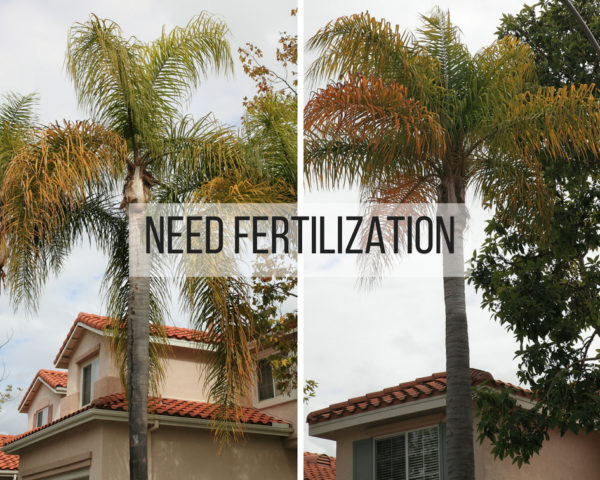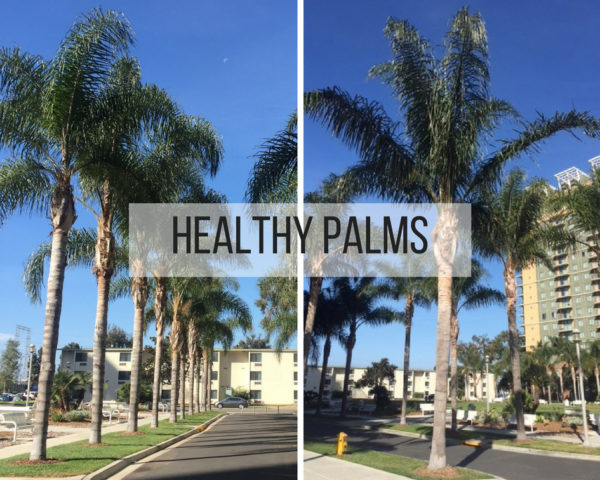You can’t go far in Southern California without seeing a palm tree and, in the midst of all those leafy fronds, you might be surprised to find out how many of them are unhealthy. Palm trees are monocots, which means they are more like grass than woody trees and therefore require care different from tipuana tipus, eucalyptus, and others.
Palms need specific nutrients to grow healthy and strong but these may not be naturally present in their soil. A surefire way to tell if your palms are asking for fertilization is to look at the fronds:

It’s natural and actually healthy for palm trees to have a lower ring of fronds that are yellowing or brown as this is part of how the palm moves nutrients from the fronds into the plant itself. But if fronds in the canopy itself are yellowing, as in the pictures above, there is a very good chance that the tree lacks important nutrients. Over time, this condition can worsen and eventually kill the palm.
Below are pictures of palms that are regularly treated with a slow release fertilizer:

You can clearly see how much darker green these palms are. What you can’t see is that the palms are also healthier, stronger, and will live longer.
Fertilization is an easy and relatively inexpensive way to improve the appearance of your palms while ensuring they will continue to add to the beauty of the property for many years to come. Contact us to discuss a plan for your palm trees.
